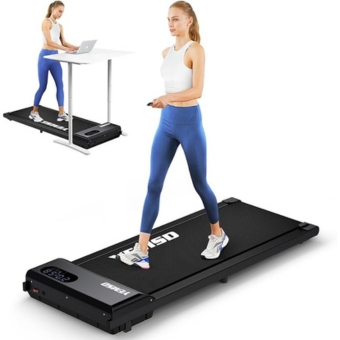Table of Contents
- Introduction: Importance of syncing activity tracker data
- Compatibility: Check for app and device compatibility
- Connecting Devices: Step-by-step guide to sync
- Data Sharing: Share data between apps seamlessly
- Troubleshooting: Common issues and solutions
- Benefits: Improved tracking and analysis options
- Conclusion: Enhance your fitness journey with syncing
Introduction: Importance of syncing activity tracker data
Syncing your activity tracker data is not just about convenience; it can be a game-changer in tracking your fitness progress accurately. By syncing data from your device to other apps and devices, you can get a more comprehensive overview of your health and fitness journey. This integrated approach allows you to analyze trends, identify patterns, and make informed decisions regarding your workout routine and lifestyle choices. Moreover, syncing your activity tracker data enables you to set realistic goals, track your performance over time, and celebrate achievements along the way.
One significant benefit of syncing activity tracker data is the ability to optimize your workouts by using information gathered from various sources. For instance, combining heart rate data from a wearable device with sleep patterns tracked through another app can provide valuable insights into how well-rested you are before a workout session. This holistic approach allows for personalized training plans tailored to individual needs, resulting in more efficient and effective exercise routines. Ultimately, syncing activity tracker data empowers you to take control of your fitness journey by making informed decisions based on real-time feedback and analysis.
Compatibility: Check for app and device compatibility
When it comes to syncing your activity tracker with other fitness apps and devices, compatibility is key. Before diving into the syncing process, it’s essential to check for app and device compatibility to avoid any frustrations down the road. Different activity trackers may have varying levels of compatibility with popular fitness apps such as MyFitnessPal, Strava, or Apple Health. Ensure that your activity tracker supports the app you want to sync it with for a seamless experience.
Moreover, device compatibility plays a crucial role in syncing your data effectively. Not all activity trackers are compatible across all devices, so it’s important to verify if your particular tracker works with iOS, Android, or even specific smartwatches like Apple Watch or Fitbit devices. By ensuring both app and device compatibility before syncing your activity tracker, you can make the most out of tracking your fitness progress and seamlessly integrate data from different sources for a comprehensive overview of your health journey.
Connecting Devices: Step-by-step guide to sync
To begin syncing your devices effectively, start by ensuring that your activity tracker is compatible with the fitness apps you wish to connect it to. Check for any required updates or firmware upgrades for both the tracker and app to ensure optimal functionality. Next, navigate to the settings section on your activity tracker and locate the option for ‘Sync’ or ‘Connect’ devices. Follow the on-screen instructions carefully, which may involve enabling Bluetooth or Wi-Fi connectivity.
Once you have successfully connected your activity tracker to the designated app, take some time to explore the customization options available. Many fitness apps offer personalized goal setting features, data analysis tools, and social sharing capabilities that can enhance your overall tracking experience. By utilizing these features effectively, you can gain deeper insights into your fitness journey and stay motivated towards achieving your goals seamlessly. Remember that consistent syncing between devices is key to obtaining accurate and comprehensive data that will help you progress towards a healthier lifestyle successfully.
Data sharing between apps is revolutionizing the way we track our fitness goals. With seamless integration, different apps and devices can now communicate effortlessly, providing a comprehensive view of our health and wellness journey. This interconnectedness allows us to leverage the strengths of each app or device, creating a personalized and streamlined experience for users.
By enabling data sharing between apps, users can benefit from more accurate insights and analysis of their activity levels, sleep patterns, nutrition intake, and overall health metrics. This real-time collaboration ensures that no piece of information is left isolated, giving users a holistic understanding of their well-being. The ability to share data seamlessly between various platforms not only enhances user experience but also encourages accountability and motivation as individuals strive towards their fitness goals.
Troubleshooting: Common issues and solutions
When it comes to syncing your activity tracker with other fitness apps and devices, troubleshooting common issues can be a frustrating hurdle. One of the most prevalent issues users face is connectivity problems. If you are experiencing this, try restarting both your activity tracker and the device you are trying to sync with. Additionally, ensuring that both devices have updated software can often resolve connectivity issues.
Another common issue is inaccurate data syncing. If you notice discrepancies in the data being transferred between your activity tracker and fitness app, double-check the settings on both devices to ensure they are calibrated correctly. Sometimes simply recalibrating your devices or re-syncing them can solve these discrepancies effortlessly. Remember, patience and persistence are key when troubleshooting tech-related problems like these – don’t give up too easily!
Benefits: Improved tracking and analysis options
Improved tracking and analysis options are at the heart of syncing your activity tracker with other fitness apps and devices. By integrating data from various sources, you can gain a holistic view of your health and fitness progress. This comprehensive approach allows for more accurate monitoring of your activities, ensuring that you stay on top of your goals with precise insights into your performance.
Moreover, the ability to track and analyze information across multiple platforms provides a deeper understanding of patterns and trends in your fitness journey. You can seamlessly compare data from different sources to identify correlations between your workouts, nutrition intake, sleep patterns, and overall well-being. This level of detailed analysis enables you to make informed decisions about adjustments to your routine based on concrete evidence rather than guesswork. By harnessing these improved tracking and analysis options, you empower yourself to optimize your fitness strategies for maximum results.
Conclusion: Enhance your fitness journey with syncing
When it comes to enhancing your fitness journey, syncing your activity tracker with other fitness apps and devices can truly be a game-changer. By utilizing the power of synchronization, you’re able to track your progress seamlessly across different platforms, allowing for a more comprehensive view of your health and wellness efforts. This integration not only simplifies the process of monitoring your activity but also provides valuable insights into how various aspects of your fitness routine are interconnected.
Moreover, syncing offers a holistic approach to health management by enabling you to analyze data from multiple sources in one centralized location. This means you can easily identify patterns, set new goals based on concrete evidence, and make informed decisions regarding your workout regimen or nutrition plan. Embracing the concept of syncing in your fitness journey is like having a personal assistant that streamlines all aspects of your wellness routine for maximum efficiency and effectiveness. So why not take advantage of this technological marvel and elevate your path towards optimal health and fitness?















